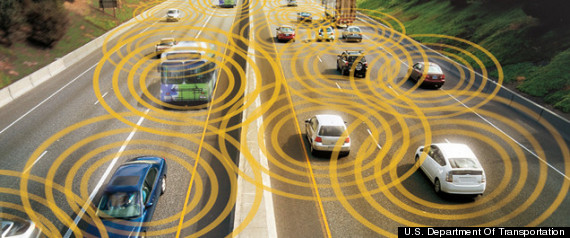The ‘Internet of cars’ is approaching a crossroads
June 27, 2013

(Credit: U.S. Department of Transportation)
Wireless vehicle networks could make driving safer, more efficient, and less polluting, but the cost of deployment will be significant, MIT Technology Review reports.
This week, officials from the U.S. Department of Transportation in Washington, DC, will see the technology in action, in a demonstration organized by experts from the University of Michigan’s Transportation Research Institute and various communications equipment and car manufacturers.
The demos will showcase a way for vehicles to exchange information — including their position, direction, and speed — with other similarly equipped vehicles as well as with roadside equipment such as traffic lights and tollbooths. The result is a peer-to-peer communication network capable of alerting drivers and onboard computers about what’s happening on the road — and what may be about to happen next.
Toward the end of the year, the Department of Transportation will decide whether to mandate that future cars include some sort of vehicle-to-vehicle communication technology or leave it to the market.
DOT has funded the largest ever real-world vehicle-to-vehicle experiment — involving 2,800 vehicles, many belonging to ordinary drivers who have volunteered to take part — has been under way in Ann Arbor, Michigan, for the past 10 months. (See A 3,000-vehicle test of wireless crash-avoidance system and V2V: Department of Transportation’s new communication system helps cars avoid crashes by talking to each other on KurzweilAI.) […]